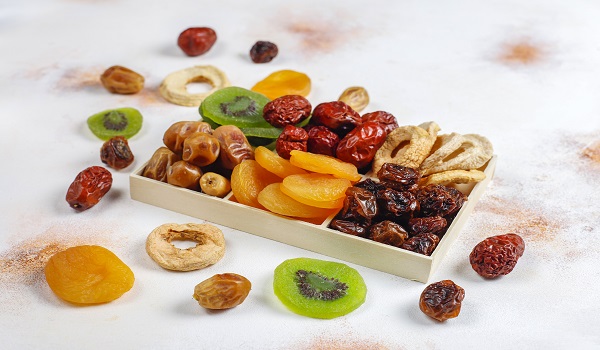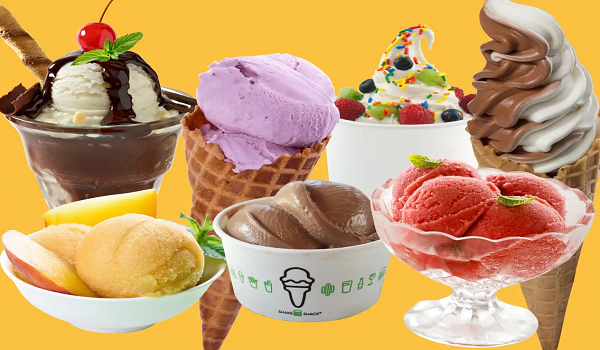It’s advisable to avoid confusion
Start by reading the nutritional label to find out what your meal truly contains in order to make a better decision. Both are delicious and both have health benefits, says Firoz H Naqvi, Editor-in-Chief, Ice Cream times Magazine.
Introducing as contemporaries Ice cream, gelato, frozen treats, kulfis, softies, and cool drinks are summertime favourites for most of us. Making healthy decisions can be challenging, though, because there are so many options. Yet every summer, a battle of sorts resumes between ice cream and frozen dessert makers, and often, consumers are unaware of the difference.
What’s the difference between ice cream and a frozen dessert? And does it matter?
Yes and no, because consumers can be confused by the constant battle between the giants. But the advantage of this battle is that consumers are now aware of the difference between ice cream and a frozen dessert and can make their own choices. The Food Safety and Standards Authority of India (FSSAI) has categorized ice-creams under “dairy-based desserts and confections”, and “frozen desserts and confections” as products obtained by freezing a pasteurized mix prepared with milk fat and/or edible vegetable oils and fat. The milk fat is used in such desserts for freezing.
So, the question is: how many of you pick frozen desserts over ice cream, and which one tastes better than the other?
Indian cuisine is delicious, flavourful, and uses a lot of oil and fat. Think about how little vegetable fat is used in frozen desserts. It is used in comparably smaller amounts than oil and fats while flavouring daals and curries. It turns out that the answer is yes, which is why nutritionist Mac Singh emphasised the need to read the food’s package to learn more about its nutritional worth.
“The ingredients listed last are present in the least amount. You’ll discover that frozen desserts have the most water by volume, followed by sugar, palm oil, and no milk. He said that they had milk solids and sugar (12 grams) in 53 grams”, Singh explained. As such, it is important to “not get confused between ice cream and a frozen dessert”; they are both different. This is why you should check the ingredient label. Real ice cream is made of real milk and contains real nutrients. On the other hand, frozen desserts contain palm oil or hydrogenated fats as the main ingredient.
When it comes to choosing between kulfi and frozen desserts, it ultimately depends on individual preferences and dietary restrictions. For example, kulfi may be a better option for those who are lactose intolerant or allergic to certain ingredients commonly found in frozen desserts, such as nuts or dairy. On the other hand, frozen desserts may be a better option for those looking for lower-fat or sugar-free options, as there are now many non-dairy and low-calorie frozen desserts available on the market.
Frozen Dessert versus Ice Cream
All hell broke loose a couple of years ago when it was declared that some of the biggest ice cream retailers in the world could not legally call their iced deliciousness ‘ice cream’ and had to refer to them as ‘frozen desserts’ instead. In India, this led to an ad war between Amul and Kwality Walls, the two most loved ice cream brands in the country.
Amul, the country’s largest dairy provider, put up an iconic advertisement advising people to indulge in ice cream made from real milk instead of frozen desserts made from ‘Vanaspati’. Amul was then taken to court by Hindustan Unilever (the parent company of Kwality Walls) for slander against its much-loved dessert. Most simply put, ice cream is made of milk solids or fats, whereas frozen desserts use vegetable oil, or Vanaspati.
The use of different ingredients naturally renders varied nutritional benefits to the two. For example, vegetable oil contains trans and saturated fats, which rank high in the unhealthy index. Kwality Wall’s products are made with milk/milk solids and do not contain vanaspati. In fact, their frozen dessert products use milk without cholesterol to offer healthy and exciting choices to consumers. The incident hardly made a difference in our loyalty towards our favourite ice cream brands, but perhaps that was because we didn’t really know the difference between frozen dessert and ice cream.
We know what you’re thinking: if the taste is delightful, then why should this difference, or the knowledge of it, matter?
To answer the question, let’s first look at the differences between ice cream and frozen delicacies. Bothare delectable treats, yet each has its own particular characteristics. Walking through the frozen food area of the supermarket isle may have been one of the nicest aspects of many people’s childhoods. Dessert selections include popsicles, ice cream, and a range of other frozen delights.
What is the difference between ice cream and a “frozen dessert” other than what is said on the package?
It goes a bit farther than simply listing the ingredients and the production method. Indeed, ice cream-like frozen treats have given rise to legal wrangling. The war had just begun when India’s largest fast-moving consumer goods (FMCG) company, Hindustan Unilever, filed a case against the country’s largest ice-cream maker, Gujarat Cooperative Milk Marketing Federation, in the Bombay High Court, successfully obtaining an injunction against an advertisement for Amul ice cream that “disparaged frozen desserts”. Amul’s ad had said that people should eat real ice cream made from milk rather than frozen dessert made from “vanaspati”. The court said the ad was “guilty of disparaging a rival product”—Unilever’s Kwality Walls, which is a leader in frozen desserts.
Ice cream is made from milk fats, while a frozen dessert is made from vegetable oil fats. Vanaspati is a hydrogenated vegetable oil used in cooking as a cheaper substitute for ghee or butter. But it’s not used in frozen desserts, say manufacturers. Every summer, a battle of sorts resumes between ice cream and frozen dessert makers. Often, consumers are unaware of the difference.

Food for thought
It has taken years and multiple efforts by brands, governments, and consumers to cultivate a culture of conscious consumption. And it is extremely unfair to advertise a product in a manner that is misleading to the consumer. It is unfair not only to the consumer but also to the competitor brand that is selling the more authentic version of the said product.
From the ice cream manufacturers’ point of view, it had become very difficult to convince people that a company was making ice cream and not frozen dessert as the confusion raged on. So, the best approach was to educate the consumers by pointing them to the differentiation that the government of India has made. Ice manufacturers like Havmor, Mother Dairy, and Amul had to literally come out with a campaign on print and digital mediums talking only about the goodness of their products—that they are made from rich, creamy milk and not vegetable oil.
The Food Safety and Standards Authority of India (FSSAI) has classified ice-creams under “dairy-based desserts and confections”, further categorized as plain, medium fat,” and low fat depending on the percentage of total solids, milk fat, and milk protein used, while it defines “frozen desserts and confections” as a product obtained by freezing a pasteurized mix prepared with milk fat and/or edible vegetable oils and fat. The milk fat is used in such desserts for freezing.
According to ice-cream manufacturers, frozen desserts have captured a market share of 40 per cent of the Rs.1,800 crore markets with a growth rate of approximately 10–12 per cent every year.
The debatable health factors
From a health aspect too, if we are comparing ice cream against frozen desserts; the latter actually has trans and saturated fats, which are harmful when consumed in higher quantities. Where the price of the products and ingredients are concerned, dairy fats cost INR 300 per kilo, while vegetable fats cost around INR 60 per kilo.
This, however, does not result in any price difference for the consumer, who pays the same amount for both ice cream and frozen dessert.
But Hindustan Unilever contests this by stressing that frozen desserts do not contain trans-fat since their source of fat is vegetable oil, which is trans-fat-free.
The truth is that 10 percent of the fat that goes into ice cream is dairy fat, whereas that 10 percent cent going into frozen dessert is vegetable oil fat.
Ingredients
The food regulator defines “frozen dessert” or “frozen confection” as a product obtained by freezing a pasteurized mix prepared with milk fat and/or edible vegetable oils and fat. The dairy ingredients used in frozen desserts are cream, milk, and dry milk powder. Other ingredients include sweeteners, stabilizers, emulsifiers, flavourings, liquids like vanilla, powders like cocoa, fruits, nuts, swirls, and candy and cookie pieces.
Ice cream is manufactured from milk or cream (dairy), while frozen sweets are made with vegetable oils. The difference between a frozen dairy treat and a straightforward frozen dessert is that a great frozen dairy treat may be an indulging experience, but if a product has too many toppings or additions, it may lose its status as ice cream. An occasional “fortified” product, such as ice cream with added protein, may be created by a company. Frozen dessert doesn’t always have to contain dairy; it only comes from other sources of fat and doesn’t contain any dairy.
Production
Ice cream is prepared from dairy products such as milk or cream, sugar, vanilla extract, and other flavourings, which is a clear distinction from frozen sweets. The combination is then processed into ice cream, which is a soft, creamy solid. In contrast, frozen desserts are similar to ice cream except that they are comprised of wheat, sugar, and vegetable oil.
Labelling
The taste of both ice cream and frozen desserts is as good as it can get. However, frozen desserts can be taken out of the running to be called ice cream due to too many mix-ins or toppings that change the density of the product. In some cases, manufacturers may be making a ‘fortified’ product, like protein-enriched ice cream, that does not meet the requirements to be called ice cream.
The government has come up with a gazette notification amending the Prevention of Food Adulteration Act to allow the labelling of frozen desserts as “vegetable fat-based ice cream” or “non-dairy ice cream”. This has sparked off a set of claims and counterclaims, and it is time consumers learn to read between the lines and decide which one they want.
Bottom-line
The taste of both ice cream and frozen desserts is as good as it can get. However, frozen desserts can be taken out of the running to be called ice cream due to too many mix-ins or toppings that change the density of the product. In some cases, manufacturers may be making a ‘fortified’ product, like protein-enriched ice cream, that does not meet the requirements to be called ice cream.
The government has come up with a gazette notification amending the Prevention of Food Adulteration Act to allow the labelling of frozen desserts as “vegetable fat-based ice cream” or “non-dairy ice cream”. This has sparked off a set of claims and counterclaims and it is time consumers learn to read between the lines and decide which one they want.


